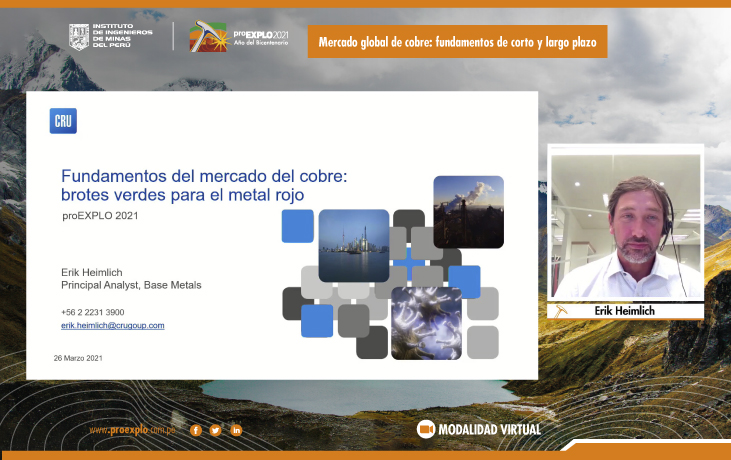 26th March
26th March
Renewables and electric cars will drive copper demand this decade

On the last day of the 12th International Congress of Prospectors and Explorers (proEXPLO 2021), the Senior Analyst of the Base Metals Analysis team at CRU, Erik Heimlich, evaluated the real situation and what is to come in relation to copper; as well as the causes that will impact both its production and demand.
With the presentation "Global Copper Market: Short and Long-Term Fundamentals", the economist indicated that non-conventional renewable energies and electric cars will drive copper demand in this decade, that is, in the period 2021-2030.
Regarding price, Erik Heimlich estimated that copper price volatility will continue. "Hopefully it will peak in 2021 and come down a bit in the next few years. Also, there will be new mines and small surpluses that are estimated to be less than 200,000 tons per year in a market of 25 million tons," he said.
Likewise, he pointed out that when we talk about a copper price supercycle, this refers to prolonged periods of rise. "Going forward, the candidate for a supercycle is the transformation to a green economy, which will imply a greater demand and also supply restrictions," he said.
He added that China is in a transition to less capital-intensive and is trying to develop high-tech sectors; therefore, copper consumption after 2030 will depend on what will happen with consumption in the world outside China.
At another point in his presentation, Erik Heimlich emphasized that banks are increasingly evaluating social and environmental risks; and that ratings for mining companies are lower than for other sectors. "Financing will depend on the correct measurement of social and environmental risks," he said.
In response to questions posed by the general manager of Kallpa SAB and moderator of the keynote, Alberto Arispe, the senior analyst of the Base Metals Analysis team at CRU specified that China has made strategic purchases to protect and ensure supply.
"They tend to buy when the price is low and they buy it from outside China; but it is only 3 months of consumption. Also, China's strategy is that they made a lot of early investment (even when sectors of the population with lower GDP per capita did not justify it), such as high-speed trains or electricity grids; and we know that in their eighth five-year plan they expect services development," Erik Heimlich pointed out.




